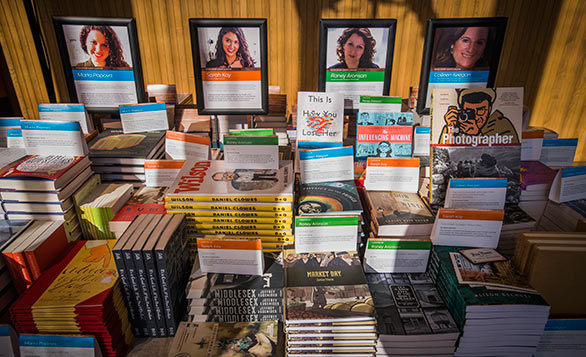
A look at the famous TED Bookstore at TED2013. Photo: Michael Brands
Books can entertain, sucking you like a tornado into incredible new worlds. Books can teach, giving you a richer understanding of time periods, people and ideas you’ve never been exposed to. But books can do so much more.
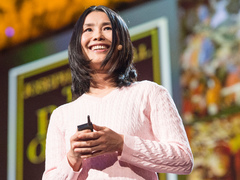 Lisa Bu: How books can open your mind
In today’s talk, TED’s own Lisa Bu introduces us to the concept of “comparative reading,” the practice of reading books in pairs, to give deeper context and reveal new insights. Comparative reading not only helped Bu adjust to American culture after moving here from China for graduate school — it also helped her re-imagine her life and find new directions after her dream failed to come true. This personal, moving talk about the magic of books and resilience of the human spirit is a must-watch »
Lisa Bu: How books can open your mind
In today’s talk, TED’s own Lisa Bu introduces us to the concept of “comparative reading,” the practice of reading books in pairs, to give deeper context and reveal new insights. Comparative reading not only helped Bu adjust to American culture after moving here from China for graduate school — it also helped her re-imagine her life and find new directions after her dream failed to come true. This personal, moving talk about the magic of books and resilience of the human spirit is a must-watch »
Every year at TED, we set up a bookstore filled with books recommended by TEDsters of note. Today, as you prepare for a summer filled with reading, we are releasing this incredible library of recommendations from this spring’s TED2013 bookstore. We’ll begin, of course, with Lisa Bu’s must-reads, followed by book recommendations from Rainn Wilson, Sarah Kay, Baratunde Thurston, Maria Popova, Guy Raz, Chip Kidd, Cindy Gallop, Keith Yamashita, Bill T. Jones, Safwat Saleem, Raney Aronson, Raghava KK, Tiffany Dufu, Chris Kluwe, Karen Wickre and Colleen Keegan. Click the name to hop straight to their list. Let’s get started…
Lisa Bu’s book picks
Jane Eyre by Charlotte Bronte. “My role model of an independent woman when I was growing up. ‘Do you think, because I am poor, obscure, plain, and little, I am soulless and heartless? You think wrong!’”
Cheaper by the Dozen by Frank B. Gilbreth. “Since reading this book as a kid, I have been obsessed with efficiency. Read it at your own risk.”
The Good Earth by Pearl S. Buck. “Pearl S. Buck’s house in Nanjing was the office of my department at Nanjing University, but we students couldn’t read this book because it was banned in China. I finally read it in the U.S.”
Benjamin Franklin: An American Life by Walter Isaacson. “Torn between staying in the IT industry and becoming a (poor) PhD student in journalism, I used Benjamin Franklin’s method to decide. It worked well. Read it with John Adams.”
John Adams by David McCullough. “Both Franklin and Adams were great men, in such different ways. They had many disagreements, but the American Revolution needed them both.”
Personal History by Katharine Graham. “An inspiration for me when I am struggling with insecurities. Read it with The Snowball. The two are great friends and business partners.”
The Snowball: Warren Buffett and the Business of Life by Alice Schroeder. “I like his approach to wealth, management and hiring. ‘Life is like a snowball, all you need is wet snow and a really long hill.’”
Lamb: The Gospel According to Biff, Christ’s Childhood Pal by Christopher Moore. “This book is both funny and profound. The teenage Jesus takes a road trip to look for the three wise men, and encounters Buddhism and Hinduism along the way. I’m amazed by the author’s understanding of all three religions.”
The Power of Myth by Joseph Campbell. “My all-time favorite. I still read it a few times a year.”
The Way of Chuang Tzu by Thomas Merton. “Instead of ‘lost in translation,’ I find there’s much to gain. Maybe because without cultural preconceptions, a Westerner can read this ancient text with fresh eyes and see its original meaning more readily. Read it together with Tao: The Watercourse Way.”
Tao: The Watercourse Way by Alan Watts. “I’m amazed by Watts’ understanding of Eastern philosophies. He has the ability to express complicated ideas in an easy to understand manner.”
Rainn Wilson’s book picks
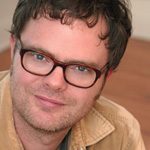 Actor Rainn Wilson is best known as Dwight Schrute on The Office – but he is also the co-founder of SoulPancake (with whom TED is proud to share a 2013 Webby Award). His curation philosophy: “I wanted to choose books in line with SoulPancake’s ongoing exploration of ‘life’s big questions.’ This is a diverse collection of words that has enriched my human experience in a profound way.”
Actor Rainn Wilson is best known as Dwight Schrute on The Office – but he is also the co-founder of SoulPancake (with whom TED is proud to share a 2013 Webby Award). His curation philosophy: “I wanted to choose books in line with SoulPancake’s ongoing exploration of ‘life’s big questions.’ This is a diverse collection of words that has enriched my human experience in a profound way.”
The Seven Mysteries of Life by Guy Murchie. “An enormous tome of knowledge, wisdom, science, philosophy and transcendental mysticism that was said to have inspired Carl Sagan’s Cosmos. Like Walt Whitman as a science geek.”
A Giacometti Portrait by James Lord. “Writer James Lord sat for a portrait by the brilliant, haunted and exacting artist Alberto Giacometti. It was supposed to last one day and ended up lasting eighteen. A fascinating study of the obsessive artist in the throes of his creation.”
The Family Virtues Guide: Simple Ways to Bring Out the Best in Our Children and Ourselves by Linda Kavelin Popov. “I know the words ‘family’ and ‘virtues’ together in a sentence can be a colossal turn-off, but this book is different. It explores the concept of educating children on universal virtues that make the world a better place.”
This Is a Book by Demetri Martin. “The sharpest, oddest wit in an evolutionary line that includes James Thurber, Steve Martin and Steven Wright. Demetri’s brain astounds me.”
Narrow Road to the Interior by Matsuo Bashō. “The master of the haiku wrote this travelogue of his journey through northern Japan in the 17th century. Everywhere he went he composed a poem and connected his work to his cultural heritage, his spiritual life and, most of all, nature. A riveting meditation.”
Mountains Beyond Mountains: The Quest of Dr. Paul Farmer, a Man Who Would Cure the World by Tracy Kidder. “A biography of the great doctor, teacher and humanitarian, Paul Farmer. In the Artibonite plain in rural Haiti, he walks hundreds of miles, healing the sick and delivering AIDS medication with a selfless determination that is awe-inspiring.”
Big Cats by Holiday Reinhorn. “This magnificently strange, moving and hysterical debut collection of short stories was, full disclosure, written by my WIFE! But I wouldn’t recommend so highly if I didn’t think it one of the very best short story collections.”
Rome and Jerusalem: The Clash of Ancient Civilizations by Martin Goodman. “My two favorite cities have a storied and contentious history, richly documented in this terrific study. Sparks fly and, meanwhile, Christianity sweeps in and transforms the world in a few short hundred years. Fascinating.”
Sarah Kay’s book picks
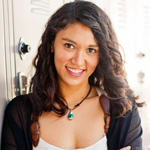 Spoken word poet Sarah Kay inspires students by showing them that, yes, they have a story to tell. Her TED Talks “If I Should Have a Daughter” and “How Many Lives Can You Live?” morph poetry and memoir. Her curation philosophy: “I picked books that have made me cry, laugh and marvel. Each one of these books has been instrumental in making me want to write — some dating back to childhood, others from more recent explorations.”
Spoken word poet Sarah Kay inspires students by showing them that, yes, they have a story to tell. Her TED Talks “If I Should Have a Daughter” and “How Many Lives Can You Live?” morph poetry and memoir. Her curation philosophy: “I picked books that have made me cry, laugh and marvel. Each one of these books has been instrumental in making me want to write — some dating back to childhood, others from more recent explorations.”
Everything Is Everything and Working Class Represent by Cristin O’Keefe Aptowicz. “Cristin was the first person to ever teach me that women poets could be funny and silly while still being smart and moving. I love the matter-of-fact style she uses, and the way she examines everyday life with humor and care.”
A Barrel of Laughs, A Vale of Tears by Jules Feiffer. “I love self-aware books. This one pokes fun at traditional fairytales and also at the way books work. When I read it for the first time as a kid, it utterly wowed me.”
Fun Home: A Family Tragicomic by Alison Bechdel. “An amazing graphic novel, it is also a stunning work of creative nonfiction and a beautifully written memoir that’s heartbreakingly honest.”
The Essential Rumi, New Expanded Edition by Jalal al-Din Muhammad Rumi. “I used to read one Rumi poem every night before I went to bed. It still amazes me that words Rumi wrote so long ago can be so relevant to my life today.”
Racing Hummingbirds by Jeanann Verlee. “Jeanann Verlee was one of the first women I ever saw perform spoken-word poetry, and she not only ripped the rug out from under my feet, she lit it on fire. Her poetry is like a speeding train of chaos headed straight for your heart. (Confession: I also helped edit this one!)”
Pink Elephant by Rachel McKibbens. “Rachel McKibbens’ poetry comes in swinging and leaves me breathless. Her control over language is like none I’ve ever read.”
The Griffin & Sabine Trilogy by Nick Bantock. “My favorite books growing up. I loved the romance of secret letters and hidden worlds, and adored being able to physically open envelopes and feel like I was peering into something magic. Bantock’s work is so imaginative and stunning.”
1Q84 by Haruki Murakami. “I tell people that this book ruined my life in the best possible way. Meaning: I couldn’t stop reading it, and when it was done, I couldn’t stop thinking about it. It invaded my dreams and affected the way I thought about the world.” (Note: This book also comes recommended by Chip Kidd.)
The Principles of Uncertainty by Maira Kalman. “I adore the whimsical nature of this book, and I appreciate how she creates art to help her figure things out— the same reason I write poetry.” (Also recommended by Keith Yamashita.)
Shadow of the Wind by Carlos Ruiz Zafon. “I have a big soft spot for magical realism, and this book is one of the best examples I’ve found. Zafon’s story is a perfect read for book-lovers, especially ones who find old musty libraries romantic.”
Middlesex by Jeffrey Eugenides. “I read this when I was in high school, and it turned everything I knew about gender upside down. I love the way Eugenides constructs this story, with history and fiction.”
Baratunde Thurston’s book picks
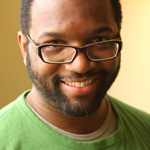 A brilliant author and clever comedian, Baratunde Thurston uses humor, truth and technology to tackle race, class and culture. He recently gave a talk at TEDxMidwest. His curation philosophy: “All of the books on this list have affected the way I see the world in at least a semi-permanent fashion. They’ve turned me into that guy that won’t shut up to his friends about the idea he just read. And they were all written using word-processing software.”
A brilliant author and clever comedian, Baratunde Thurston uses humor, truth and technology to tackle race, class and culture. He recently gave a talk at TEDxMidwest. His curation philosophy: “All of the books on this list have affected the way I see the world in at least a semi-permanent fashion. They’ve turned me into that guy that won’t shut up to his friends about the idea he just read. And they were all written using word-processing software.”
The Power Broker by Robert A. Caro. “This is the story of an activist empowered and then corrupted by his pursuit of power. It should be mandatory reading for anyone who claims to be a New Yorker.”
The New Jim Crow by Michelle Alexander. “This is one of those books you read knowing it will upset you, and yet you read it anyway. Simply put: the drug war is the U.S.’s latest version of a racial caste system that uses the label ‘felon’ to enable discrimination we would otherwise find deplorable.”
Some of My Best Friends Are Black by Tanner Colby. “A white man named ‘Tanner’ wrote this book about the failure of integration in the United States. Looking at education, housing, church and advertising, the author finds that we are as effectively segregated as ever, not by happenstance but by engineering.”
Perdido Street Station by China Miéville. “One of the most imaginative works of fiction I’ve ever read. This book changed the way I see the world of my dreams and my waking hours.”
Malcolm X: A Life of Reinvention by Manning Marable. “An amazing portrait of a force of a man. It made Malcolm X feel like a human being with whom I could identify.”
Daemon by Daniel Suarez. “One of the most terrifying techno-thrillers due to the fact that it was written by a computer security expert, it shows how our future could play out in a most dramatic fashion. This book could also be called This Is Why We’re F***ed.” (Watch Daniel Suarez’ TEDGlobal Talk here »)
The Company: A Novel of the CIA by Robert Littell. “It’s a ‘fictionalized’ account of the formation of the Central Intelligence Agency. Yeah, right. Everything in this book is true!”
Dune by Frank Herbert. “Must. Have. Spice.”
Gang Leader for a Day: A Rogue Sociologist Takes to the Streets by Sudhir Venkatesh. “A sociologist all but moves into a Chicago housing project to live among, study and briefly manage a gang. Call it ‘the immersion method’ of graduate study.” (Note: Stephen Levitt’s TED Talk is based on the sociological data that Venkatesh gathered.)
Illusions: The Adventures of a Reluctant Messiah by Richard Bach. “This book comes closest to a favorite song, in that I’m always excited to read it again and again.”
The Intuitionist: A Novel by Colson Whitehead. “There are two schools of elevator inspection in early-20th-century New York City: the empiricists, who use advanced instrumentation, and the intuitionists, who rely on gut feeling. The best intuitionist in the game is a black woman.”
Behind the Kitchen Door by Saru Jayaraman. “What good is your locally grown, grass-fed and serenaded beef if the people who prepare it are abused? This book makes the compelling case that our definition of sustainable food must also include restaurant workers. More than merely upsetting you with facts, this book lays out a path toward solutions.”
Horns: A Novel by Joe Hill. “I might categorize this as ‘playful horror.’ A man starts to grow devil-like horns, and people confess their worst sins to him. Hilarity ensues.”
Go the F**k to Sleep by Adam Mansbach and Ricardo Cortes. “Read this f***ing book.”
Maria Popova’s book picks
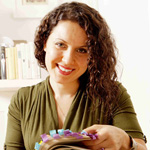 Maria Popova is the editor of BrainPickings.org. Her curation philosophy: “Virginia Woolf wrote on the mesmerism of books. ‘I feel…as though the physical stuff of my brain were expanding, larger and larger, throbbing quicker and quicker with new blood — and there is no more delicious sensation than this.’ Gathered here are books to make both hemispheres throb.”
Maria Popova is the editor of BrainPickings.org. Her curation philosophy: “Virginia Woolf wrote on the mesmerism of books. ‘I feel…as though the physical stuff of my brain were expanding, larger and larger, throbbing quicker and quicker with new blood — and there is no more delicious sensation than this.’ Gathered here are books to make both hemispheres throb.”
I Saw a Peacock with a Fiery Tail by Ramsingh Urveti. “This die-cut masterpiece is based on a 17th-century British ‘trick’ poem and illustrated in the signature Indian folk art style of the Gond tribe by Ramsingh Urveti. It comes from the independent publisher Tara Books, who give voice to marginalized art and literature through remarkable handmade books.”
As Consciousness Is Harnessed to Flesh: Journals and Notebooks, 1964-1980 by Susan Sontag. “An intimate glimpse of the inner life of a woman celebrated as one of the twentieth century’s most remarkable intellectuals. Oscillating between conviction and insecurity in the most beautifully imperfect and human way possible, Sontag details everything.”
Big Questions from Little People by Gemma Elwin Harris. “The questions children ask are often so simple that they turn unwittingly philosophical. Harris asked thousands of primary school children to send in their most restless questions, then invited some of today’s most prominent thinkers – including TEDsters Alain de Botton, Mary Roach, and Richard Dawkins – to answer.”
Where the Heart Beats: John Cage, Zen Buddhism, and the Inner Life of Artists by Kay Larson. “An exceptional intellectual, creative and spiritual biography of Cage — one of the most influential composers in modern history, whose impact reaches beyond the realm of music and into art, literature, cinema, and just about every other aesthetic and conceptual expression of curiosity about the world.”
Tiny Beautiful Things: Advice on Love and Life from Dear Sugar by Cheryl Strayed. “A collection of no-bulls**t, wholehearted wisdom on life’s trickiest contexts published under The Rumpus columnist Dear Sugar’s long-awaited real name. Turn to page 352 for a sublime taste.”
A Technique for Producing Ideas: The Simple Five-step Formula Anyone Can Use to be More Creative in Business and in Life! by James Webb Young. “Originally published by an ad man in 1939, this forgotten gem lays out with striking lucidity and clarity the five essential steps for a productive creative process.”
The Where, the Why, and the How: 75 Artists Illustrate Wondrous Mysteries of Science by Matt Lamothe, Julia Rothman, Jenny Volvovski. “Some of today’s most celebrated artists create scientific illustrations and charts to accompany short essays about the most fascinating unanswered questions on the minds of contemporary scientists. A testament to the idea that ignorance drives discovery.”
Henri’s Walk to Paris by Leonore Klein and Saul Bass. “A children’s book from the graphic designer responsible for some of the most timeless logos and film title sequences of the twentieth century.”
The Big New Yorker Book of Dogs by The New Yorker Magazine. “A remarkable collection of canine-themed gems — fiction, poetry, articles, humor, cartoons, cover art, manuscript drafts and more.”
Internal Time: Chronotypes, Social Jet Lag, and Why You’re So Tired by Till Roenneberg. “The German chronobiologist demonstrates through a wealth of research that our sleep patterns have little to do with laziness and other such scorned character flaws, and everything to do with biology.”
Guy Raz’s book picks
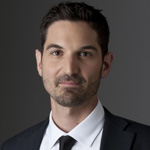 Radio veteran Guy Raz has covered war, peace and everything in-between. Last year, he left Weekend All Things Considered to host TED Radio Hour. His curation philosophy: “I’m a generalist. I serve a vast, diverse audience of listeners with very different tastes — so when I feature a book, I look for a strong, compelling voice or narrative, no matter the topic.”
Radio veteran Guy Raz has covered war, peace and everything in-between. Last year, he left Weekend All Things Considered to host TED Radio Hour. His curation philosophy: “I’m a generalist. I serve a vast, diverse audience of listeners with very different tastes — so when I feature a book, I look for a strong, compelling voice or narrative, no matter the topic.”
Homage to Catalonia by George Orwell. “This book has influenced my perspective as a reporter more than any other. Orwell went to Spain to write a triumphant narrative of the cause he supported, but what he saw fundamentally changed him.”
Letters to a Young Contrarian by Christopher Hitchens. “The power of Hitchens’ arguments strangles you because they are so tightly written and so convincing. His message is simple: don’t trust yourself and, once you’ve come to a conclusion, second-guess it.”
At the Jazz Band Ball: Sixty Years on the Jazz Scene by Nat Hentoff. “Reading this book is like getting a front-row seat to some of the greatest moments in jazz history.”
Guns, Germs, and Steel: The Fates of Human Societies by Jared Diamond. “A book that needs to be read because Diamond raises important questions about why some societies came to dominate others. I came away convinced that ingenuity had almost nothing to do with it.”
Postcards from Tomorrow Square: Reports from China by James Fallows. “Fallows has become one of the most prescient journalists in the English-speaking world. This book gathers his best essays from China during the mid-2000s and tells the story of that country’s rapid economic rise through stories of dreamers, schemers, charlatans and heroes.”
Everyone Poops by Taro Gomi. “A wonderful resource for small children and a great refresher for adults.”
Moonwalking with Einstein: The Art and Science of Remembering Everything by Joshua Foer. “This book, at its core, is about the science of memory. But Foer manages to craft a thrilling narrative written with the kind of intimacy and familiarity found in the work of writers twice his age.”
The Price of Inequality: How Today’s Divided Society Endangers Our Future by Joseph Stiglitz. “A powerful argument for how and why the growing wealth gap is bad for everyone –including the wealthy.”
Plutocrats: The Rise of the New Global Super-Rich and the Fall of Everyone Else by Chrystia Freedland. “The left pines for the days of high-wage manufacturing jobs. The right still believes in the promise of trickle down economics. Freedland makes a forceful case for why neither side has been willing to figure out how to make capitalism work for the middle class.” (Freedland spoke at TEDGlobal)
Ratio: The Simple Codes Behind the Craft of Everyday Cooking by Michael Ruhlman. “I have hundreds of cookbooks. This one is essential. Ruhlman wants to free the home cook from the ‘shackles of the recipe.’”
Rubicon: The Last Years of the Roman Republic by Tom Holland. “A serious, scholarly history of the fall of the Roman Republic. Holland has a gift for bringing the ancient world alive and capturing all its drama, treachery and wonder that makes it resonate to twenty-first century ears.”
The Thing Around Your Neck by Chimamanda Ngozi Adiche. “A collection of stories about Nigeria, America and the immigrant experience told with a deftness.” (Note: Watch Adiche’s TED Talk, “The danger of a single story.”)
The Echoing Green: The Untold Story of Bobby Thomson, Ralph Branca and the Shot Heard Round the World by Joshua Prager. “A richly researched narrative that uncovers the truth behind one of the most enduring myths of Major League Baseball.”
The Age of Wonder: How the Romantic Generation Discovered the Beauty and Terror of Science by Richard Holmes. “A biography of a period straddling the late 18th and early 19th centuries when dreamers and explorers, stargazers and mad scientists stumbled upon some of the greatest discoveries known to man.”
Classics: A Very Short Introduction by Mary Beard. “By one of the greatest living scholars of the ancient world, who is also a polymath and can write about airport architecture, dogwalkers or good bars.”
Chip Kidd’s book picks
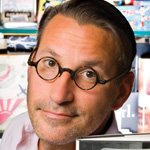 Chip Kidd designs tantalizing book covers — and swears in his 2012 TED talk that it is, just sometimes, a laughing matter. His curatorial philosophy: “As you may or may not know, I’m very much into graphic novels, and last year saw some of the best that were ever produced in the medium. Plus some other visual and verbal treats.”
Chip Kidd designs tantalizing book covers — and swears in his 2012 TED talk that it is, just sometimes, a laughing matter. His curatorial philosophy: “As you may or may not know, I’m very much into graphic novels, and last year saw some of the best that were ever produced in the medium. Plus some other visual and verbal treats.”
Buddha by Osama Tezuka. “This epic life of the Buddha in an eight-volume graphic novel is a must for all ages. Don’t let the Disney-esque style of the drawing fool you — this is as thought-provoking, profound and heartbreaking as it gets.”
Building Stories by Chris Ware. “The big graphic novel, literally, of the decade. Already hailed as a landmark in the art of graphic storytelling, it’s a true masterpiece of experimental story-telling.” (Also recommended by Safwat Saleem and Raney Aronson.)
The Hive by Charles Burns. “Part 2 of Burn’s eerily thrilling graphic novel epic that started with X’ed Out. It’s like the most fascinating nightmare you’ve ever seen.”
Life Upon These Shores: Looking at African American History, 1513-2008 by Henry Louis Gates, Jr. “It’s been said that the history of the African-American experience is the history of America itself. This stunning, ground-breaking illustrated book covers from 1513 up to 2008.”
Wonder by R.J. Palacio. “This is a kids’ book, but it’s really for everyone. A brilliantly nuanced performance, in the voice of a severely deformed but otherwise normal 10-year boy trying to integrate himself into ‘normal’ society. You are with him every heartbreaking step along the way.”
100 Ideas That Changed Graphic Design by Steven Heller and Veronique Vienne. “One of the best books on the history of graphic design that I’ve ever seen. Rather than break it down chronologically (as most do), Heller and Vienne take it one visual or conceptual idea at a time.”
Born Modern: The Life and Design of Alvin Lustig by Steven Heller & Elaine Lustig Cohen. “Alvin Lustig was the pre-eminent modernist book designer of the 20th century, and this long-overdue monograph of his work is an invaluable addition to any designer’s library.”
Cartooning: Philosophy and Practice by Ivan Brunetti. “A lovely, brilliantly simple introduction to the basic components of visual storytelling. Brunetti is a master of minimal gestures for maximum emotional effect. A must for any aspiring storyteller.”
Cindy Gallop’s book picks
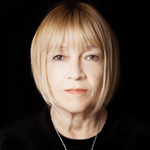 At TED2009, MakeLoveNotPorn.com founder Cindy Gallop stepped up and gave a classic talk examining some of the ways that pornography has distorted the way young men parse sex. She says, “My TED Books curation philosophy: A) I loved this book.B) I wished I’d written it.”
At TED2009, MakeLoveNotPorn.com founder Cindy Gallop stepped up and gave a classic talk examining some of the ways that pornography has distorted the way young men parse sex. She says, “My TED Books curation philosophy: A) I loved this book.B) I wished I’d written it.”
Neuromancer by William Gibson. “I’ve read everything William Gibson has written several times over. Start with this — the novel that invented cyberspace. He’s my top must-follow on Twitter @greatdismal.” (Also recommended by Chris Kluwe, who says “Seriously, if you haven’t read this, you’re doing yourself a disservice.”)
Await Your Reply by Dan Chaon. “This is an exceptionally original, exceptionally well-constructed, exceptionally thought-provoking, powerful read.”
House of Leaves by Mark Z. Danielewski. “A highly innovative reinvention of the literary form. Also, scared me s***less.”
Mysteries of Winterthurn by Joyce Carol Oates. “This was the first of Joyce Carol Oates’ books I ever read, and it totally hooked me on her.”
Rework by Jason Fried and David Hansson. “The only business book you’ll ever need. (Until I write mine.)”
Lolita by Vladimir Nabokov. “A literary tour de force. I love the way it also functions as a wonderful American travelogue.”
Collected Works of Rudyard Kipling. “I love Rudyard Kipling – so much so that I had the opening stanza of ‘The Ballad of East and West’ screenprinted on the upholstery of a daybed. Great novelist, great short story writer, great poet.”
Mating in Captivity by Esther Perel. “I recommend this book to everybody — male or female, straight or gay, single or married — as a brilliant examination of the workings of human desire.”
The Hotel New Hampshire by John Irving. “When I finished this book, I wanted to write to John Irving, gush all over the paper and say ‘You are a god.’ (I didn’t. Wish I had.)”
Why Have Kids? by Jessica Valenti. “I’ve said for years that one day I wanted to write a book that would be obligatory reading for every woman and man considering having kids, that laid out the case against as much as for. Jessica Valenti’s written it.”
Then We Came to the End by Joshua Ferris. “Anybody who’s ever worked in an advertising agency — read this book. Also applies to anybody who’s ever worked in an office.”
We Need to Talk About Kevin by Lionel Shriver. “Extraordinary.”
Men, Women and Children by Chad Kultgen. “An up-to-the-minute and touching study of relationships in today’s world, that also demonstrates why MakeLoveNotPorn is so necessary.”
Fight Club by Chuck Palahniuk. “Only three pages in, I desperately wished I’d written this.”
Dark-Adapted Eye by Barbara Vine. “I love all Barbara Vine’s psychological thrillers. (It’s Ruth Rendell writing under a pen name.) This is one of the best.”
Data, A Love Story by Amy Webb. “The only online dating guide you’ll ever need.”
Keith Yamashita’s book picks
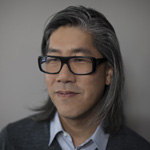 TEDster Keith Yamashita, chair of SYPartners, uses his love of design and belief in creativity to tackle the world’s complex problems. His curation philosophy: “There is nothing better on a Friday night than going to the bookstore and buying a stack of books. My philosophy for this collection was to examine what makes us humbly human.”
TEDster Keith Yamashita, chair of SYPartners, uses his love of design and belief in creativity to tackle the world’s complex problems. His curation philosophy: “There is nothing better on a Friday night than going to the bookstore and buying a stack of books. My philosophy for this collection was to examine what makes us humbly human.”
When Things Fall Apart by Pema Chodron. “A Buddhist meditation on the toughest parts of life, Pema teaches us that these moments deserve our leaning into them, not shying away from them. A heady, sobering book that’s optimistic about human kind.”
The Art of Possibility by Rosemonde Stone Zander and Ben Zander. “Ben is a conductor, but really, an expert on what makes people tick, aspire and rise to the occasion to be truly great.”
Cradle to Cradle: Remaking the Way We Make Things by Michael Braugart and William McDonough. “This book changed the way I think about design, sustainability and responsibility.”
Understanding Comics by Scott McCloud. “While on the surface it’s about comics, it’s really about visual storytelling and visual thinking. Enlightening and entertaining.” (For a taste, watch Scott McCloud’s TED Talk.)
My Ideal Bookshelf by Thessaly La Force. “I love the peek inside the brains of so many people I admire, and the beautiful illustrations. It’s a true delight.”
Super Normal by Naoto Fukasawa and Jasper Morrison. “Naoto Fukasawa is Japan’s Jonathan Ive. This is a collection of everyday objects he has gathered. When you read it, you’ll never look at a plain object the same way again.”
Ways of Seeing by John Berger. “This book changed the way I look at the world. Literally. Figuratively. Meaningfully.” (Also recommended by Raghava KK.)
Press Here by Herve Tullet. “A funny commentary on the human brain and how it works. Such a simple book, it gets you to appreciate the childlike joy of exploration. Press here. Do that. Delight in life.”
Design, Form and Chaos by Paul Rand. “Paul was a mentor to so many of us. I worked with Paul at NeXT Computer—and he was our grand visionary of the NeXT brand. May he rest in peace.”
Design as Art by Bruno Munari. “An oldie, but still some of the most interesting writing on design, creativity and life. I constantly go back to it for inspiration.”
Artful Making: What Managers Need to Know About How Artists Work by Robert Austin and Lee Devin. “A research-based framework for encouraging organizational creativity and innovation.”
An Intimate History of Humanity by Theodore Zeldin. “A history of human thoughts and feelings told through personal vignettes — after all, sometimes the best way to understand the future is to look at the creation of the past.”
Bill T. Jones’ book picks
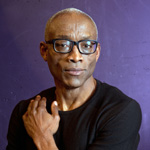 Director and choreographer Bill T. Jones is a living legend and one of the greatest American performers of our time. He participated in TEDxBroadway last year. His curation philoshophy: “I spend as much time listening to music as I do reading. So my choices reflect reading for research, intellectual entertainment and informing myself on topics I’d like to know more about.”
Director and choreographer Bill T. Jones is a living legend and one of the greatest American performers of our time. He participated in TEDxBroadway last year. His curation philoshophy: “I spend as much time listening to music as I do reading. So my choices reflect reading for research, intellectual entertainment and informing myself on topics I’d like to know more about.”
Triste Tropiques by Claude Lévi-Strauss, et. al. “This memoir is almost a travelogue. Its gifted author oscillates between disciplined scientist grieving at the changes he observes in the tropics and poet/philosopher using his powers of evocation and metaphor to raise scientific observations to the level of art.”
Rites of Spring by Modris Eksteins. “This passionate account of what lead up to WW1 was part of my research for my most recent work, A Rite, a response to the 100th anniversary of Stravinsky’s Rite of Spring.”
The Hidden Reality: Parallel Universes and Deep Laws of the Cosmos by Brian Greene. “Brian Greene is our era’s most prominent popularizer of physics. This book offered me a clear juxtaposition to the artistic and philosophical ferment of 1913, as represented by Rite of Spring.”
A Year from Monday: New Lectures and Writings by John Cage. “I created a new work, Story/Time, which pays homage to John Cage and his seminal performance Indeterminacy (1956). This book proved invaluable and entertaining as a provocation, amusement and guide in the research.”
Give My Regards to Eighth Street: Collected Writings by Morton Feldman. “This is a collection of short essays and diaristic ruminations on the music scene of the 1950s and ’60s. It was an important source for my research lately.”
Abraham Lincoln: Redeemer President by Allen C. Guelzo. “This informed Fondly Do We Hope, Fervently Do We Pray, a commission from the Ravinia Festival to mark the 200th anniversary of Lincoln’s birth.”
The Warmth of Other Suns: The Epic Story of America’s Great Migration by Isabel Wilkerson. “As a child of migrant workers myself, this concise, moving description of Jim Crow as the engine of the phenomena we call ‘the great migration’ has been a painful lesson and consolation.”
Journey to the West by Wu Cheng’en. “A curious compendium of folk tales based on the legendary pilgrimage to India by Tang-era Buddhist monk Xuanzang. The mischievous Monkey, one of the novel’s magical creatures, remains an enduring ‘star’ in theater.”
Tale of the Water Margin by Shi Nai’an. “This 14th-century tale is ribald, harrowing, suspenseful and ultimately mystical. The archetypical depiction of righteous persons in rebellion against the control of oppressive regimes.”
Austerlitz by W.G. Sebald. “A magisterial and elusive rumination on the boundaries of memory and understanding, this novel’s explosive tragic underpinning is triggered by a fortuitous reconnection between two acquaintances in Antwerp’s train station.”
Leaving the Atocha Station by Ben Lerner. “A deceptively slight novel that brings us too close to the mind and empty inner life of a young product of our internet-dependent, self-obsessed, woozy culture.”
Obedience by Chris Vitiello. “A curiously moving, maddeningly self-conscious reach for meaning through a rigorous preoccupation with the conundrums of language and sign.”
The Once and Future King by T.H. White. “Entertaining, erudite, showy and deep, this adaptation of Sir Thomas Malory’s Le Morte d’Arthur is a great read. An adventure story that’s profound in its depiction of human intercourse.
Safwat Saleem’s book picks
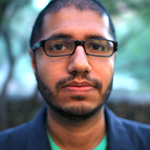 Graphic designer, artist, filmmaker and TED Fellow Safwat Saleem pushes limits and challenges norms. His curation philosophy: “These are some of the more visual books I’ve enjoyed in the past couple of years. A mix of funny, beautiful, inappropriate, complex and mind-blowingly good, they are all quick reads.”
Graphic designer, artist, filmmaker and TED Fellow Safwat Saleem pushes limits and challenges norms. His curation philosophy: “These are some of the more visual books I’ve enjoyed in the past couple of years. A mix of funny, beautiful, inappropriate, complex and mind-blowingly good, they are all quick reads.”
Significant Objects by Rob Walker and Joshua Glenn. “The authors conducted an experiment to see if the value of material objects would change if they were coupled with a story that provided context about them. The results are fascinating.”
The Red Tree by Shaun Tan. “My all-time-favorite picture book. I came across it years ago and, for the very first time, realized how moving stories could be when told through pictures. The words are sparse but carefully chosen.”
Should You Be Laughing at This? by Hugleikur Dagsson. “I can’t think of a book that has a more apt title. Dagsson’s work is inappropriate (to put it mildly) but I laughed anyway.”
I Made These Drawings for You by Marc Johns. “One of my favorite illustrators. His watercolor drawings have the ability to turn the ordinary into surreal.”
The Where, the Why, and the How: 75 Artists Illustrate Wondrous Mysteries of Science by Matt Lamothe, Julia Rothman, Jenny Volvovski. “Learning science while staring at jaw-dropping illustrations: the geek in me was very satisfied to have found this book.”
I Want My Hat Back by Jon Klassen. “Klassen has a very unique illustration style and this picture book is pure eye candy.”
A Field Guide to the North American Family by Garth Risk Hallberg. “Written as a visual field guide, this reinvents the concept of reading a book. It can be read in any order, while still developing as a compelling narrative.”
All My Friends Are Dead by Avery Monsen & Jory John. “The book Camus would’ve made if he could draw. And if he had a sense of humor.”
Raney Aronson’s book picks
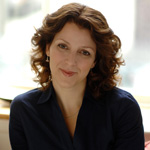 TED attendee Raney Aronson is better known as a filmmaker and the Deputy Executive Producer of Frontline, PBS’s iconic investigative program. Her curation philosophy: “Graphic novels and comic art speak to me as a documentary filmmaker, journalist and visual thinker. I love the texture of a book, combined with words, illustrations and photographs – it makes me feel as if I’ve opened a window into a surprising universe.”
TED attendee Raney Aronson is better known as a filmmaker and the Deputy Executive Producer of Frontline, PBS’s iconic investigative program. Her curation philosophy: “Graphic novels and comic art speak to me as a documentary filmmaker, journalist and visual thinker. I love the texture of a book, combined with words, illustrations and photographs – it makes me feel as if I’ve opened a window into a surprising universe.”
Maus by Art Spiegelman. “A true classic. Filled with heart, angst and tragedy – this story spoke to me deeply as I attempted to grapple with the horrifying truths of the Holocaust as a younger person.”
The Photographer, Into War-Torn Afghanistan with Doctors Without Borders by Emmanuel Guibert, Didier Lefèvre, Frédéric Lemercier. “Striking, brave and visually arresting, this graphic novel is like none I’ve seen. It brings the story of the war in Afghanistan home with a flood of images in both memoir and journalistic form.”
The Arrival by Shaun Tan. “Anyone who has stood staring with curiosity at the stark photographs of those who came to America through Ellis Island will be transported by this beautiful and elegant series of portraits. Their faces and gestures tell the story of joy, anticipation, tragedy, dreams and loss as they anticipate what is to come.”
Market Day by James Sturm. “Starkly and dramatically drawn, and set in Eastern Europe in the early 1900s, this graphic novel brings alive a story about a man’s trials with changing economic and social forces. A timeless tale still resonates deeply.”
The Influencing Machine by Brooke Gladstone and illustrated by Josh Neufeld. “An irreverent telling, with heart and verve, of our nation’s media history — one worth noting as serious journalism suffers its biggest financial challenges in history.”
City of Glass by Paul Auster, Adaption by David Mazzucchelli and Paul Karasik. “I was fascinated to see how one of my all-time favorite novels was adapted by Mazzucchelli and Karasik. It is truly a new visual framework while staying authentic to Auster’s vision.”
Fun Home by Alison Bechdel. “A diary kept since Bechdel was a 10-year-old girl is the centerpiece of this graphic memoir. This memoir is not chronological as most are, but is told thematically by a person who has come to terms with her life as a whole.”
It’s A Good Life If You Don’t Weaken by Seth. “This graphic novel is angst ridden yet illuminating about what it means to come of age; to make sense of your childhood and move forward in a world of limitless possibilities. Simple yet powerful brushwork.”
Wilson by Daniel Clowes. “Wilson is a character you know you shouldn’t like, but you fall in love with anyway. He is self-deprecating and honest, delivering blunt thoughts with the dramatic flair that only Clowes can pull off.”
Raghava KK’s book picks
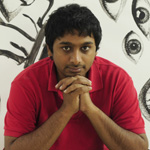 Raghava KK uses cartoonish language to examine the body, society and our world. His three talks, “My 5 Lives as an Artist,” “What’s your 200–year plan?” and “Shake up Your Story,” thoughtfully contemplate art, life, creativity and impact. His curation philosophy: “Instead of bringing you the hottest books on the shelf, I decided to share with you books that have shaken me up and impacted the way I live, think, and laugh. I have a slight bias towards the visual arts, history and India, but hey, I’m an Indian artist who loves history.”
Raghava KK uses cartoonish language to examine the body, society and our world. His three talks, “My 5 Lives as an Artist,” “What’s your 200–year plan?” and “Shake up Your Story,” thoughtfully contemplate art, life, creativity and impact. His curation philosophy: “Instead of bringing you the hottest books on the shelf, I decided to share with you books that have shaken me up and impacted the way I live, think, and laugh. I have a slight bias towards the visual arts, history and India, but hey, I’m an Indian artist who loves history.”
Paddy Clark Ha Ha Ha by Roddy Doyle. “I completely identified with the bratty kids in this story, and laughed and cried with this book. It’s a great example of an adult putting himself in the shoes of a child.”
India After Gandhi: The History of the World’s Largest Democracy by Ramachandra Guha. “A look at India as the world’s most impossible democracy, where every truism has an equally valid opposite truism. This history of the making of post-independence India inspiringly tells the story of finding unity in utter diversity.”
The Indispensable Calvin and Hobbes: A Calvin and Hobbes Treasury and The Essential Calvin and Hobbes by Bill Watterson. “I understand why Bill Watterson is the preferred ‘god’ for most atheist and agnostics. Calvin and Hobbes is cheerful, endearing, and profound.”
Identity and Violence: The Illusion of Destiny by Amartya Sen. “A powerful argument about how complex identity is.”
The Big Bento Box of Unuseless Japanese Inventions (101 Unuseless Japanese Inventions and 99 More Unuseless Japanese Inventions) by Kenji Kawakami. “The title says it all! This is the most fun, innovative, crazy, quirky time-pass book of all time!”
Catching up with Gandhi by Graham Turner. “A good introductory book to the life of Gandhi.”
Sagmeister: Made You Look and Things I have learned in my life so far by Stefan Sagmeister. “I love the man, the work, and the book! A fellow TED-ster and a really cool guy.” (Watch any of Sagmeister’s four TED Talks.)
The Painted Word by Tom Wolfe. “A hilarious and quick read on the self-important world of art and art criticism. A book on art for all.”
Why Look at Animals by John Berger. “I’m a little biased by my love for Berger’s profound and simple writing. His essays, although written several decades ago, seem as relevant as ever.”
Last Child in the Woods: Saving Our Children From Nature-Deficit Disorder by Richard Louv. “This changed the way I looked at our relationship with nature. It talks about how we have created a container culture.”
Carry On, Jeeves (A Jeeves and Bertie Novel) by P. G. Wodehouse.“Most young Americans that I’ve met have not been introduced to the witty, laugh-out loud sarcasm of P.G. Wodehouse. You will thank me.”
The Signal and the Noise: Why So Many Predictions Fail — but Some Don’t by Nate Silver. “A lot of my work involves separating signal from noise and I think it’s amazing how that can apply to every walk of life, from politics to aesthetics to neuroscience.”
Typography Sketchbooks and Graphic: Inside the Sketchbooks of the World’s Great Graphic Designers by Steven Heller and Lita Talarico. “I love sketchbooks. There is a certain beauty to the raw, unrefined ideas.”
Folding Techniques for Designers: From Sheet to Form by Paul Jackson. “A beautiful book. I look at it and dare not attempt to recreate!”
Wall and Piece by Banksy. “Do I really need to say anything about Bansky?”
Symbol by Steven Bateman. “A book of over a thousand symbols, organized into categories. It’s almost like defining a new visual vocabulary of the corporate world.”
Form+Code in Design, Art, and Architecture by Casey Reas. “The author of this book was a co-inventor of Processing, the open-source procedural drawing program where code has form and beauty. It allows artists to create pretty complex visual forms.”
Constructing the Enemy: Empathy/Antipathy in U.S. Literature and Law by Rajini Srikanth. “A difficult read, but extremely powerful in bringing out the complexity of empathy.”
Tiffany Dulu’s book picks
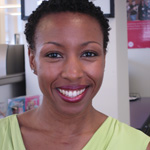 As President of The White House Project, TED attendee Tiffany Dufu is igniting the leadership of women in business and politics. Her curation philosophy: “I was a bookworm, an English major, and almost an English professor until a mentor explained to me there was life outside of academia. I love books and these are just a few of the ones I’ve bought several times, given away, then bought again.”
As President of The White House Project, TED attendee Tiffany Dufu is igniting the leadership of women in business and politics. Her curation philosophy: “I was a bookworm, an English major, and almost an English professor until a mentor explained to me there was life outside of academia. I love books and these are just a few of the ones I’ve bought several times, given away, then bought again.”
Practical Genius: A 5-Step Plan to Turn Your Talent and Passion into Success by Gina Rudan. “After training 15,000 women to advance their leadership, we’ve learned that those who are the most successful have several assets including being effective storytellers. Gina’s strategy is the best I’ve seen.”
Managing to Change the World: The Nonprofit Manager’s Guide to Getting Results by Alison Green and Jerry Hauser. “The holy grail of The Management Center, who I’ve been a student of for years. Don’t let the title fool you. It works for anyone in any sector.”
Cooking with Grease: Stirring the Pots in America by Donna Brazile. “Brazile’s story demonstrates how those who have led from the foot of the table are often those best equipped to sit at the head of it.”
Necessary Dreams: Ambition in Women’s Changing Lives by Anna Fels. “It includes my favorite definition of ambition: the desire to achieve mastery and to be rewarded for it. Fels brilliantly articulates the complexity of ambition for half the population and addresses an important internal barrier to women’s advancement.”
Rewired: How to Work Smarter, Live Better, and Be Purposefully Productive in an Overwired World by Camille Preston. “Any leader needing to sort through the noise and maintain their effectiveness in this highly wired world could benefit from this one.”
Onward: How Starbucks Fought for Its Life without Losing Its Soul by Howard Schultz and Joanne Gordon. “Talk about a comeback. A fabulous case study in someone who takes responsibility for enabling others to achieve shared purpose in the face of uncertainty.”
Living History by Hillary Rodham Clinton. “2016 can’t come fast enough.”.
Chris Kluwe’s book picks
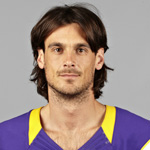 TED attendee Chris Kluwe became one of the NFL’s most outspoken marriage-equality advocates while on the Baltimore Ravens, when his colorful letter to a Maryland state delegate sparked a discussion about gay rights and professional sports. His curation philosophy: “These are all books that I can read over and over and have impacted my life through either the writing or the message conveyed.” (Get more recommendations from Kluwe in his book Beautifully Unique Sparkleponies.)
TED attendee Chris Kluwe became one of the NFL’s most outspoken marriage-equality advocates while on the Baltimore Ravens, when his colorful letter to a Maryland state delegate sparked a discussion about gay rights and professional sports. His curation philosophy: “These are all books that I can read over and over and have impacted my life through either the writing or the message conveyed.” (Get more recommendations from Kluwe in his book Beautifully Unique Sparkleponies.)
Ender’s Game by Orson Scott Card. “An interesting read on the idea of total war and the sacrifices we ask of soldiers, as well as the concepts of how easily a child learns whatever they’re taught.”
Archform: Beauty by L. E. Modesitt Jr. “Modesitt combines excellent characterization with what we consider ‘beautiful,’ and how that can lead to starkly different outcomes in lives.”
Good Omens by Terry Prachett and Neil Gaiman. “Hilarious, irreverent, witty, and also a powerful statement on choosing to be who you want to be.”
Accelerando (Singularity) by Charles Stross. “A great look at both the near future of an augmented reality humanity, and the far future it could possibly lead to.”
The Player of Games by Iain M. Banks. “Culture novels are the world I would want to live in, and Player of Games shows what ‘gaming’ can actually reveal about us.”
The Forever War by Joe Haldeman. “An excellent read on both the military and bureaucracy, as well as what happens when you outlive the world you grew up in.”
The Belgariad by David Eddings. “Enjoyable high fantasy. They don’t all have to be complex.”
On Basilisk Station by David Weber. “Enjoyable space opera. Lasers — pew pew!” God Bless You, Mr. Rosewater by Kurt Vonnegut. “A day without Vonnegut is like a day without cranky, wistful insight into humanity.”
On A Pale Horse by Piers Anthony. “More fantasy, as well as a look at how to deal with a job one may not have wanted.”
Ringworld by Larry Niven. “Hard SF. Also, makes HALO fans angry. Win/win.”
The Neutronium Alchemist by Peter F. Hamilton. “Honestly, anything by Peter F. Hamilton is packed full of concepts, ideas and brilliant extrapolating of humanity’s spread to the stars. Read all of them.”
Karen Wickre’s book picks
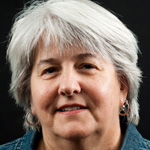 The editorial director of Twitter, Karen Wickre is an an avid reader and supporter of TED. Her curation philosophy: “These six titles reflect my passions — graphic non-fiction, home and Buddhism, loosely defined. I hope you discover something that speaks to you in any one of them.”
The editorial director of Twitter, Karen Wickre is an an avid reader and supporter of TED. Her curation philosophy: “These six titles reflect my passions — graphic non-fiction, home and Buddhism, loosely defined. I hope you discover something that speaks to you in any one of them.”
River of Shadows: Eadweard Muybridge and the Technological Wild West by Rebecca Solnit. “Such a terrific story: how Northern California became the nexus and nurturer of early technologies, outsized dreams and failures. Little has changed in 150 years.”
Are You My Mother? By Alison Bechdel. “The saga of Alison’s gnarly relationship with her complicated, mixed-signal-emitting mother. It’s rich in self-awareness, humor, and a hard-won understanding of how life works.”
Comfortable With Uncertainty by Pema Chodron. “I have my share of Buddhism for Westerners titles; the ones I return to are by Pema Chodron. The chapters are short readings that guide us through the various difficulties of being human in a modern world.”
Home: What It Means and Why It Matters by Mary Gordon. “A lovely exploration of what makes a space into home, and how acutely we feel longing for that ideal. As a nester of the first order, I love understanding the deeper impulses.”
Whatever Happened to the World of Tomorrow? by Brian Fies. “A whimsical (and dark) graphical exploration of our old ideas of what the future could mean, and our grownup understanding of its limitations.”
Mr. Penumbra’s 24-Hour Bookstore by Robin Sloan. “This cabinet of wonders offers a secret bookstore, Google, magical characters and digital natives interacting and exploring the pull of old and new. Sloan is deft and affectionate.”
Colleen Keegan’s book picks
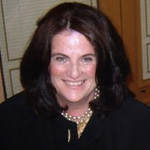 Co-chair of the endowment committee and Creative Capital Foundation Creator Colleen Keegan is an amazing patron of the TED, who regularly works with TED Fellows specializing in the arts. Her curation philosophy: “I am fascinated by books that illuminate the creative process or that utilize art to explore the human condition. I think that books worth recommending are complex but accessible, inspirational and aspirational.”
Co-chair of the endowment committee and Creative Capital Foundation Creator Colleen Keegan is an amazing patron of the TED, who regularly works with TED Fellows specializing in the arts. Her curation philosophy: “I am fascinated by books that illuminate the creative process or that utilize art to explore the human condition. I think that books worth recommending are complex but accessible, inspirational and aspirational.”
Julia Reyes Taubman: Detroit, 138 Square Miles by Julia Reyes Taubman and Elmore Leonard. “An astonishing photographic exploration of Detroit, combined with Elmore Leonard’s essay, it’s an examination of the postindustrial city.”
The Photographer: Into War-torn Afghanistan with Doctors Without Borders by Emmanuel Guibert. “This stunning graphic novel/photo-journal tells the story of the remarkable humanitarian response of Doctors Without Borders in Afghanistan after the war with the Soviet Union.”
Paul Chan: Waiting for Godot in New Orleans by Kalamu Ya Salaam, Nato Thompson and Paul Chan. “An exploration of the terrible symmetry between Samuel Beckett’s Godot and post-Katrina New Orleans.”
Houston It’s Worth It by ttweak. “A poignant and humorous photographic portrait of the city drawn by artists’ and citizens’ submissions to an unofficial, unsolicited campaign for the city of Houston.”
Ride with Me NYC, a New York City Biking Guide by Roos Stallinga. “A biking guide and love letter to the city of New York.”
Selected Letters Of William Styron by William Styron, Rose Styron, R. Blakeslee Gilpin. “These remarkable letters span the period from 1943 to 2002 and insightfully and eloquently illuminate the art of writing, his extraordinary life and his long battle with depression.”
Max Perkins: Editor of Genius by A. Scott Bers. “Chronicles the remarkable life and process of the editor of F. Scott Fitzgerald, Ernest Hemingway, and Thomas Wolfe. It is a beautifully written story of literature, privilege, responsibility and creativity.”
Physics On The Fringe: Smoke Rings, Circlons, And Alternative Theories Of Everything by Margaret Wertheim. “Written by a TED Speaker this is a fascinating and respectful examination of the bizarre world of ‘outsider physicists.’”
Because . . . by Mikhail Baryshnikov and Vladimir Radunsky. “A beautifully executed whimsical book for children that encourages and celebrates non-conformity and artistry.”
Carry Me Home: Birmingham, Alabama: The Climactic Battle of the Civil Rights Revolution by Diane McWhorter. “The extraordinary story of a turning point in America’s long civil rights struggle.”
At the Elbows of My Elders: One Family’s Journey toward Civil Rights by Gail Milissa Grant. “The extraordinary and surprising personal story by TEDster, Gail Grant chronicles the journey of one black family from disadvantage to independence to influence.”
Why Are Artists Poor?: The Exceptional Economy of the Arts by Hans Abbing. “An unconventional multidisciplinary analysis.”
My Name Is Red by Orhan Pamuk. “A wildly inventive novel about art and religion in The Ottoman Empire. One of the Nobel Prize winner’s best novels, it is a fascinating story of a murdered artist in sixteenth-century Istanbul.”
This is How You Lose Her by Junot Diaz. “A haunting and poetic exploration of the longing and weakness of the human heart, rooted in an understanding of the frailty of human nature.
Comments (140)
Pingback: 20 Awesome Things You Can Do When Alone And Bored ← Humble Solitude
Pingback: 200 Books Recommended by TEDsters | Creative Clutch
Pingback: Summer reading list 2013 for all tastes and ages « Armida Books
Pingback: Remarks by the President on Climate Change | Glasses
Pingback: Loneliness and startups – Business Insider | Glasses
Pingback: 3 Simple Ways For Tutors To Stay Motivated
Pingback: June Link Love | Being and Formulating
Pingback: The Curse of Reading and Forgetting : The New Yorker | Glasses
Pingback: Your mega summer reading list: 200 books recommended by TEDsters | Glasses
Pingback: Lecturas de Verano (y III) | Maven Trap
Pingback: Holiday Books | The Procrastiknitter